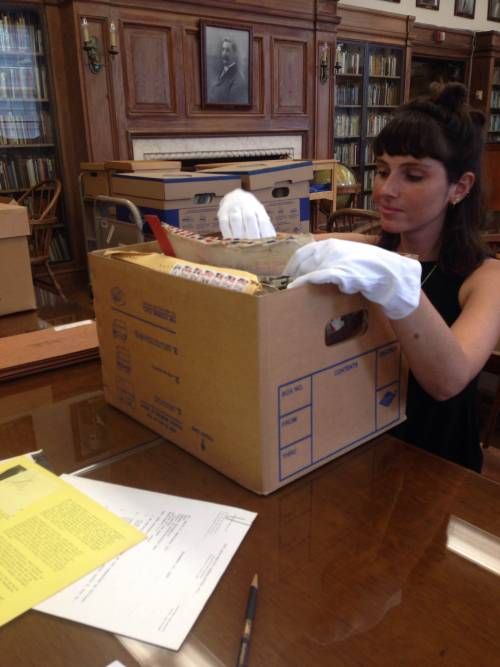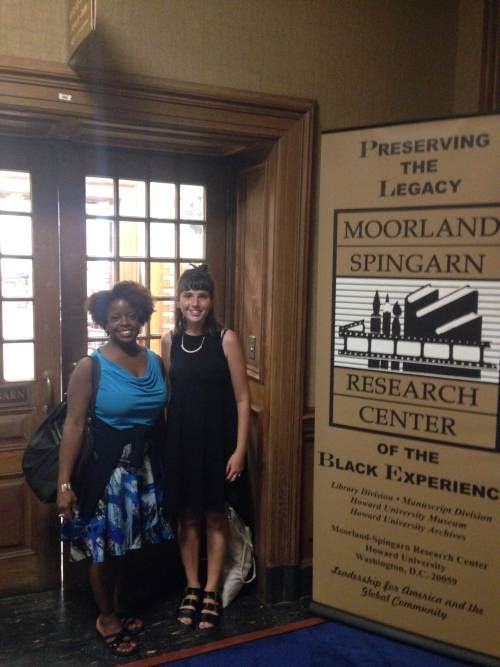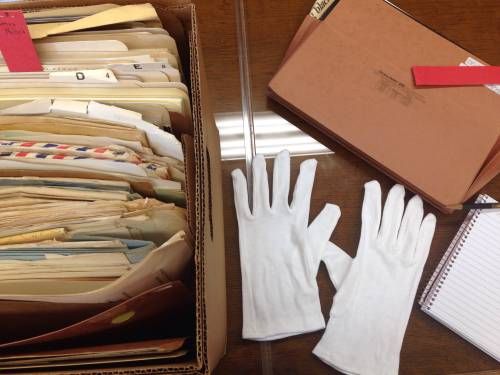NATIONAL MUSEUM OF THE AMERICAN LATINO
Laura Belik Explores the Common Struggles of Groundbreaking Black and Latino Architects
:focal(82x393:83x394)/https://tf-cmsv2-smithsonianmag-media.s3.amazonaws.com/blogging/featured/tumblr_inline_ob3ggoJdo31ryy7f0_500.jpg)
Oi, Prazer!
Today I will be leading the #LMSP2016 #FellowTakover!
My name is Laura Belik and I recently graduated from the MA Program in Design Studies at Parsons, The New School. I am an urbanist with a background in architecture, originally from Brazil and currently based in Brooklyn, NY. My research interests revolve around discussions about our cities, our societies, and thus, ourselves and how we live and interact with spaces and with each other. I am passionate about architecture and the Urbis, but I have also always been very interested in curatorial work, having spent a great part of my professional life working with museums and exhibitions. As part of the Latino Museum Studies Program, I have been working with curator Michelle Joan Wilkinson of the Smithsonian National Museum of African American History and Culture (NMAAHC) on research of Black and Latino Architects and Designers.
What does that mean? What do I do? I explore. And that’s the best part of it.
The history of architecture is absolutely fascinating. Can you imagine what it would be like to see the amazing work being done at the turn of the century? To understand that these architects were also going through a series of challenges simply by living during the Segregation Era? This discussion goes beyond their drawings and designs – which are amazing examples of the International Style - into questions of civil rights and historical movements.

Did you know less than 15% of college students today in the U.S. are black? (Source: http://nces.ed.gov/fastfacts/display.asp?id=372 ) These low rates directly reflect on professional life and opportunities. Today, there are many African American professionals excelling in their design and architecture careers. Did it happened overnight? The constant questioning of representation and recognition cannot be ignored.
To talk about “minorities” is exclusionary in itself. As a Latino Center Fellow, I cannot help to think in the semblances of my research with Latino communities in the U.S. The recognition of someone’s work many times has to break thicker walls within our societies.
Thinking about these questions within this particular historical context, I was able to accompany Michelle Joan Wilkinson to the Moorland-Spingarn Research Center at Howard University, a Historically Black University here in Washington D.C., and to take a look at some of the files they had on black architects. Howard University, together with some other institutions such as Tuskegee Institute were constantly coming up in my research on historical figures. Many of the pioneer architects either studied, lectured or worked there in some capacity. To be able to visit their archives was simply amazing. Of the few boxes we had access to, we were interested in a specific few materials. The idea of stumbling upon a “primary source” is always exciting for a researcher.

Another important reflection is that of the work of a curator as a constant researcher. Some people may not be aware, but in order to present a certain exhibition, you have to understand your collection and the conversation topic very well. Once you showcase certain pieces, you are considered someone who has the knowledge about it. It seems obvious, but maybe not. Exhibitions are referential works, and in the “behind the scenes” there are months of reading, reflection, organizing… and opening boxes.

NMAAHC is about to be inaugurated in a couple of months, and the team could not be happier. Being able to sit in the staff meetings, listen through Collections Committee Meetings, or going to visit the almost-ready museum space at the Mall guided by a team of curators that explain and ask our opinion about the individual shows, is not something anyone can do - let alone many times a day. I am not only excited about it because I get to work here, but, majorly, by thinking of the great steps this museum represents for our society in general. Again, as an LMSP Fellow, I believe that the idea of an open conversation about culture, history and representation (and most importantly, self-identity) has only started.
Follow the #LMSP2016 Fellows via instagram @smithsonian_lmsp @slc_latino, the Smithsonian Latino Center Facebook page or via twitter @SLC_Latino
